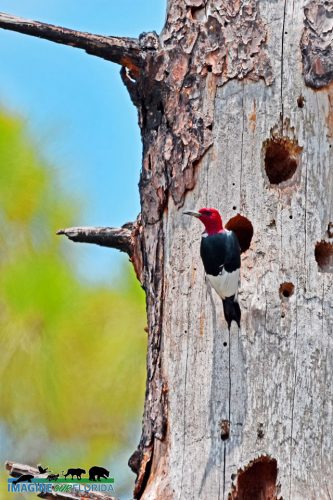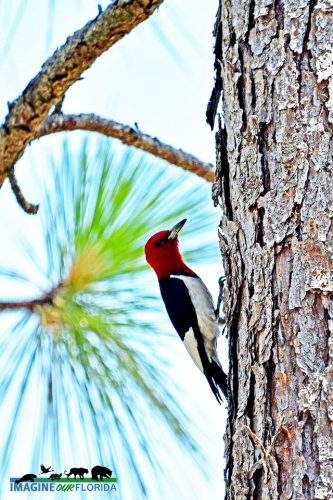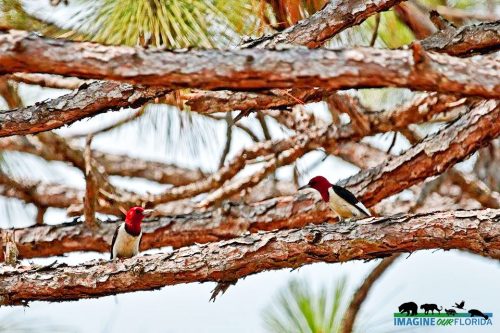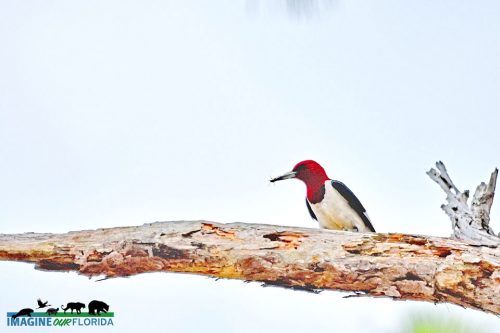It’s spring in Central Florida. While sauntering through a pine savannah, you catch a streak of red out of the corner of your eye. When you look that way, it’s gone. You catch another glimpse, but just as fast, it’s gone. Finally, it lands on a pine tree. It’s a beautiful red-headed woodpecker!
These fascinating little birds are sexually dimorphic, which means males and females have different appearances. The female is a plain brown and grey color while the male is a vibrant black, white, and red. They are monogamous and will stay together for years.
The red-headed woodpecker is a resident of open forests from Canada to Florida and west to Texas. They reside year-round in Florida in pine forests with open forest floors, in orchards, and tall trees in neighborhoods.
Red-headed woodpeckers are cavity nesters and require dead trees or limbs where they excavate their nests. They prefer open areas, including recently burned sites. Both will take part in creating the nest, however, most of the handwork is done by the male. Both the male and female incubate 4-5 eggs and share feeding the young.
Food is plentiful for this omnivorous bird. Red-headed woodpeckers dine on insects, spiders, earthworms, as well as fruit, seeds, and berries. In the fall, these smart woodpeckers gather nuts and store them in crevices and holes for winter nourishment.
Sadly, these birds have experienced over a 70% decline in population since the 1960s. With tree removal becoming a more common practice in urban areas and forest management, these birds are left with few places to raise their young. If you have a dead tree in your yard that isn’t causing a safety problem, you may consider leaving it be. Perhaps you will get some lovely new neighbors who will entertain you for hours.
Photo Credit: Andy Waldo





